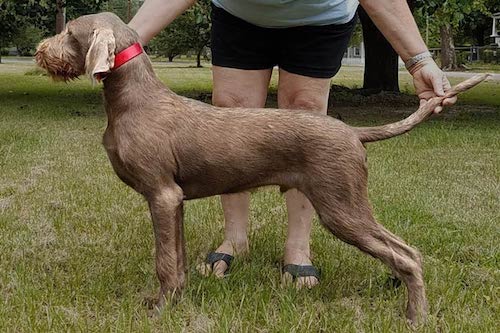
Not long ago, we had the honor and pleasure of covering the AKC’s National Championship presented by Royal Canin in Orlando, Florida, and many of the breeds we visited (like the Barbet), are working towards AKC recognition.
There are approximately 400 breeds in the world that are listed with registry organizations in other countries, breeds that aren’t all recognized by the AKC. It’s usually because there are too few dogs of that breed in the United States, or, sadly, there’s too little interest among breed owners to get AKC registered status.
If you’re wondering just what it takes to become AKC recognized, it often, but not always, starts by organizing a national breed club, then getting recorded with an accepted registry like the AKC’s Foundation Stock Service. The parent club must then send a written request to be considered for listing as an FSS breed, then provide documentation such as a written history and a written breed standard along with photographs. Once all information is presented to the Staff Executive Committee, a decision is made to allow or deny each request.
From there, it’s onto the miscellaneous class if the following criteria is met. There has to be a minimum of 100 active household members in the breed. There has to be a sufficient population (minimum of 300-400 dogs) with a three-generation pedigree all dogs living in the US. and they have to be all the same breed, and the dogs and people must be located in 20 or more states. The AKC must review and approve the club’s breed standard, as well as the club’s constitution and by-laws. If a substantial interest and activity in the breed is demonstrated nationwide and all the criteria is met, the AKC Board of Directors considers the breed for the Miscellaneous Class.
Dogs typically compete in the Miscellaneous Class for however long it takes to meet the previous criteria – sometimes as short a time as one to three years. At the end of the first year, the National Breed Club is contacted for updates on the number of dogs and litters recorded, and the number of dogs who’ve entered events since being eligible to compete in the Miscellaneous Class.
Finally, the club must have held matches, local and national breed specialty shows, judges’ workshops and breed seminars.
When all obligations and requirements are met, the Board of Directors is provided the information is presented and considers full recognition and the breed’s appearance in the official Stud Book as an AKC recognized breed.
As of July, 2018, the breeds on this list are FSS Breeds, including the Slovakian Wirehaired Pointer seen here.
Photo from the AKC appears with their consent. It is of “Bax,” co-owned and imported by Nancy Broome Edmunds.
